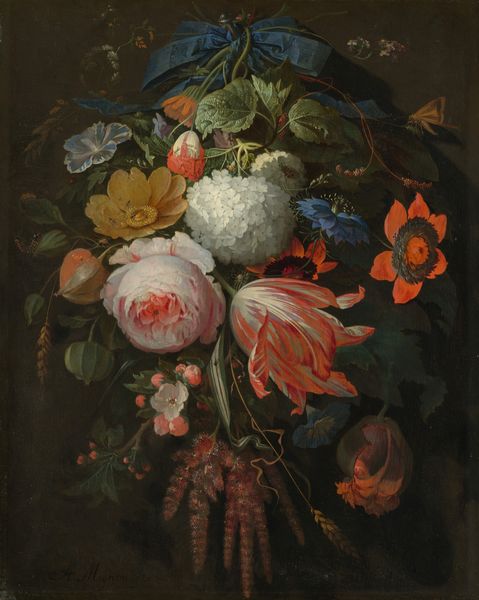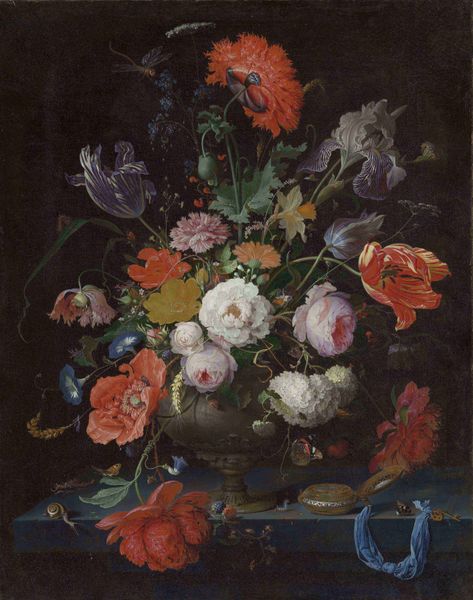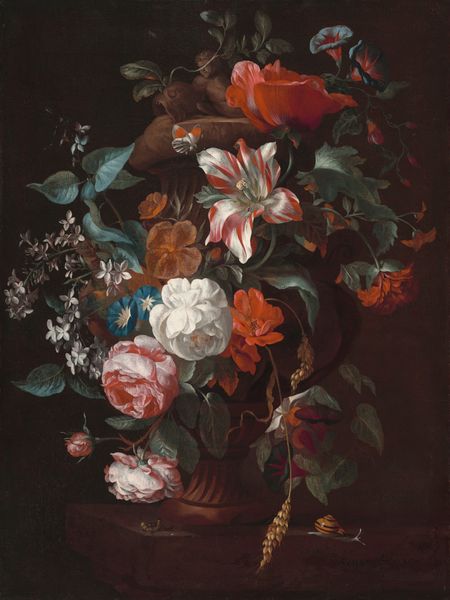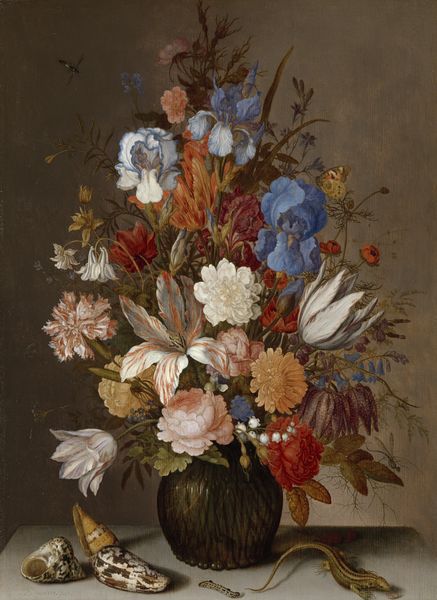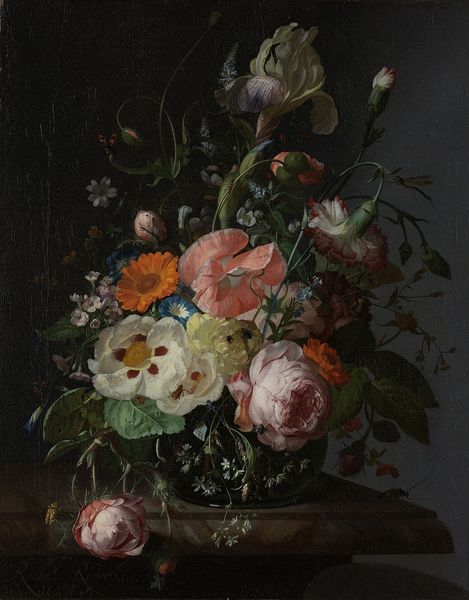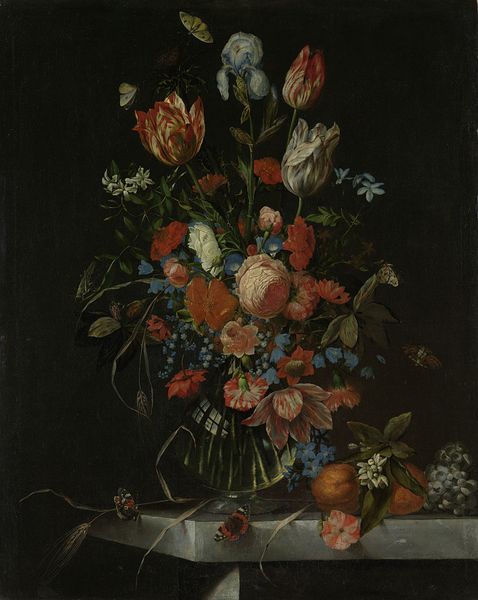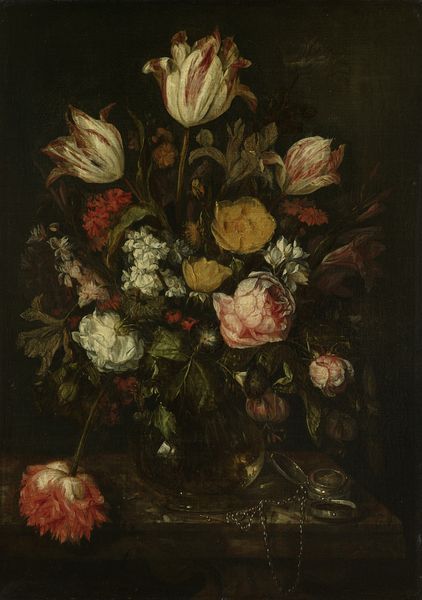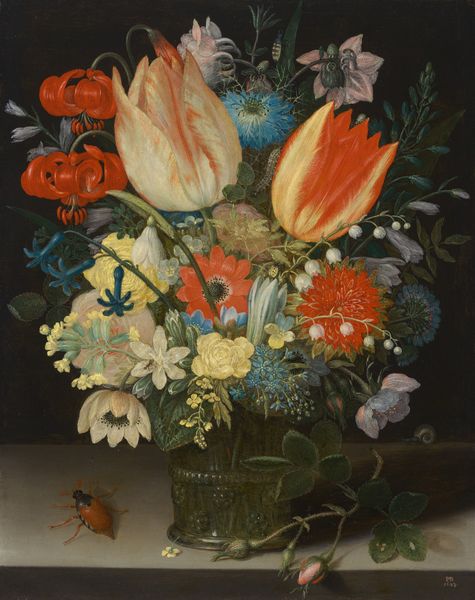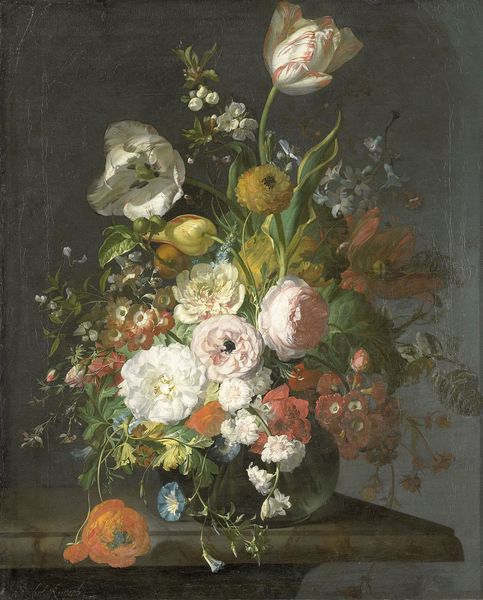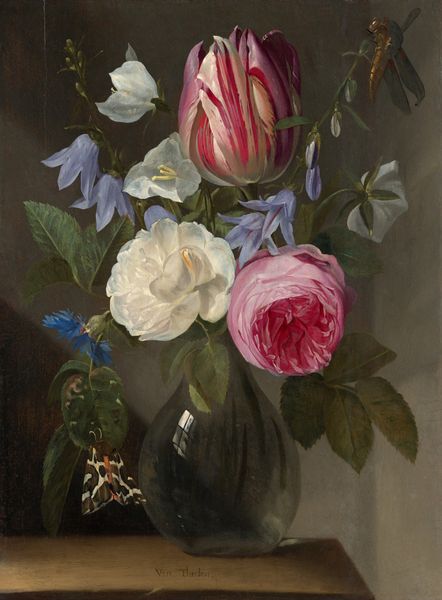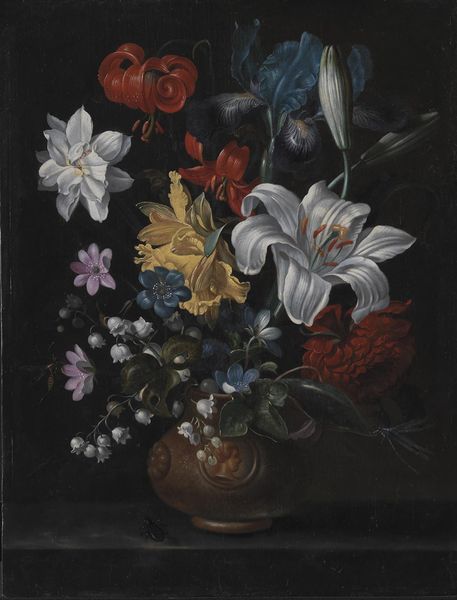
painting, oil-paint
#
narrative-art
#
baroque
#
dutch-golden-age
#
painting
#
oil-paint
#
momento-mori
Dimensions: support height 40.3 cm, support width 31 cm
Copyright: Rijks Museum: Open Domain
Jacob Marrel painted this still life of flowers and a frog on canvas in the 17th century. The flowers bursting from the vase represent life's beauty, but beneath, a dead frog lies on the stone ledge. This juxtaposition embodies the vanitas tradition, a popular motif meant to remind viewers of life’s fleeting nature. The frog is a complex symbol, seen in ancient Egyptian hieroglyphs, often connected with fertility, creation, and rebirth because of its life cycle. Yet, here, the dead frog takes on a darker symbolism. It is a memento mori, a reminder of mortality, much like the skull in other vanitas paintings. The frog also takes on a more sinister meaning. Consider the medieval allegories, where the frog is a symbol of sin, particularly greed, and temptation. This symbolism creates a tension within the painting, a visual battle between beauty and decay, life and death, and the sacred and profane. It evokes powerful emotions tied to our subconscious understanding of existence. How we perceive and internalize the image of the frog shifts through time, yet the presence of the frog, dead or alive, brings a profound unease.
Comments
rijksmuseum about 2 years ago
⋮
Jacob Marrel’s specialized in ‘portraits’ of tulips in bloom. Tulip bulbs were collected fanatically in 17th-century Holland, and astronomical prices were sometimes paid for a single bulb. In this painting as well, tulips play a leading role. The whimsically shaped red-and-white and red-and-yellow striped tulips were especially prized. Although nature creates them, it also lets them wither and die – just like the dead frog at the right.
Join the conversation
Join millions of artists and users on Artera today and experience the ultimate creative platform.


